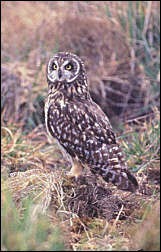 Owl
OwlI wondered the other night when I was outside and saw something fly over my house. I thought it may have been a bird of some sort but later I found out it was an owl. So this week I decided to find out what the Hawaiian owl is called and what it means when you see it flying in the sky.
The Hawaiian owl is called the pueo and is very special and considered something holy to the native Hawaiians. The Hawaiians consider the pueo to be their guardians or aumukua who have passed away and when seen flying in the air the pueo are viewed as watching over them. The pueo are said to protect individuals from harm and death. On Maui the Pueonuiakea guides people to and from their home safely. Ka pueo kani kaua is a chant speaking of the pueo protecting during fierce battles. It is said that Kamehameha was saved from falling off a cliff by a pueo flying directly over his face so he had enough time to lodge a spear in the cliff which saved him from death.
There are certain places in Hawaii where the pueo is important like in Manoa, Diamond Head, Moanaulua, and Waikiki on Oahu. So next time you see an owl flying at night over you it means
The Hawaiian owl is called the pueo and is very special and considered something holy to the native Hawaiians. The Hawaiians consider the pueo to be their guardians or aumukua who have passed away and when seen flying in the air the pueo are viewed as watching over them. The pueo are said to protect individuals from harm and death. On Maui the Pueonuiakea guides people to and from their home safely. Ka pueo kani kaua is a chant speaking of the pueo protecting during fierce battles. It is said that Kamehameha was saved from falling off a cliff by a pueo flying directly over his face so he had enough time to lodge a spear in the cliff which saved him from death.
There are certain places in Hawaii where the pueo is important like in Manoa, Diamond Head, Moanaulua, and Waikiki on Oahu. So next time you see an owl flying at night over you it means
you are safe and being watched over.




